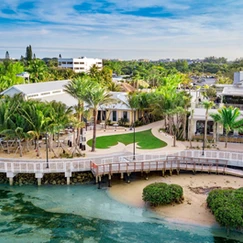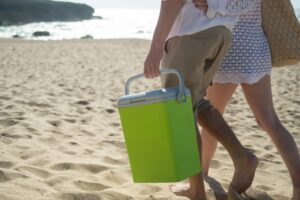Saltwater fishing is the 4th most popular participation sport in the United States and it’s been around for several thousand years. Is it a fun activity for the whole family or is it a great way to spend the day relaxing by yourself? You can bet your boat that it’s both. Chances are you’ll need plenty of useful saltwater fishing tips to get you started.
Below are just a few tips you’ll need to catch as many fish as possible while looking like a pro on your next trip out on the water.
1. Get Licensed
Check your local laws and regulations before you leave the house. Game commissions will post areas designated for fishing and provide information for off-limits areas. If you’re fishing in saltwater, especially on a boat, you’ll need an up-to-date saltwater fishing license. If you are a Florida resident or visiting temporarily, you may obtain a license here.
Be sure to check the size and catch limits for fish species you might hook on your line. Some species are protected and must be thrown back while others you can catch until your cooler is full!
2. Rods and Reels
These essential tools come in every shape, size, and variety imaginable, but it’s important to get the right tool for the job. Saltwater rods and reels need extra protection against salt and will typically be built for heavy-duty use.
Opt for a rod that is best suited for what you want to catch and your skills will allow you to use it properly. Longer rods will allow you to cast longer and catch fish that aren’t extremely powerful, so that’s always a great place to start.
Medium-weight spinning reels are great for beginners to build their skills. You can cast easily and it can support lines weighted for 10-25 pounds. This will let you cast your line in a variety of locations including in surf, off a pier, and on a boat.
3. Add Variety to Your Tackle Box
To build a basic tackle box for saltwater fishing you want a little bit of everything. Some fish prefer shiny lures, while others prefer worm-shaped lures, but all lures are designed to mimic a fish’s natural food.
In order to convince a fish that your lure is food, it needs to move like it normally would underwater. Once you’ve bought a variety of sizes, colors, and types, it’s important to practice using them.
There are three types of hooks that should be in every tackle box: J hook, live bait, and the circle hook. The J hook lets you hook multiple chunks of bait on one hook while the live bait hook allows live bait to swim somewhat naturally. Circle hooks are best for catch and release and will cause minimal damage to a fish.
4. Start Small
It can be so tempting to strap yourself into a chair with your brand new fishing rig and try to catch a fish of epic proportions to earn you enough bragging points to last a lifetime.
Unfortunately, you need to start a bit smaller. It’s best to begin on a pier or on the shore where you can master your technique and the basics of fishing. Once you’ve got the basics, then it’s okay to keep challenging yourself. You’ll learn faster and learn what types of fish you really enjoy catching if you take small steps towards the larger goal instead of jumping in headfirst.
5. Choose Your Location Wisely
You won’t catch a fish if they aren’t biting and they can’t bite if they aren’t in your location. Even if an area looks perfect, it might not have any fish. Look at tidal charts, seasonal fish locations, and ask your local fishing shop where you should start your fishing journey.
Fish are often found in large numbers near the mouths of bays and rivers where their food is abundant. If in doubt, explore your local beach to see where fishermen consistently set up their rods.
6. Pick Your Bait Wisely
Just like when you were picking your lure, your bait needs to be as close to a fish’s natural diet as possible. Worms will work for freshwater fish, but not well for saltwater. Most bait and tackle shops will be able to help you narrow down your options depending on the fish you want to catch.
Experiment with how you present your bait. You can use chunks or strips of bait and it’s best to experiment with the size of the chunks and strips. If fish aren’t big enough to bite the bait and the hook you won’t catch anything.
If your rod has been in the water for a while without any attention, you might have added too much and the fish may be stealing your bait.
7. Which Fish Are Biting?
Knowing which fish are active at any given time takes research and networking. Talk to other fishermen to see what they’ve been catching. If you are prepared to only catch flounder, but they aren’t biting you could miss out on an entire day of fishing.
It’s best to bring a variety of baits just in case one type of fish is being stubborn and refuses to bite.
8. Practice, Practice, Practice
You can’t be a master without putting in the hours. Start by practicing with your basic rig and lures. Gradually upgrade your gear and conquer new types of casting.
Choose the easiest place to learn how to fish, such as a public fishing pier, then move towards more difficult locations when fishing with your current rig and location becomes too easy.
9. Don’t Forget the Extras
While you can’t go fishing without a rod, reel, line, hook, and bait, you’ll need more gear once you’ve caught a fish. Invest in a bucket, cooler, net, and fish knives. It’s much harder to transport fish back to your home while keeping them alive.
For the freshest fish, it’s best to prepare them as soon as you get done fishing for the day.
Which Saltwater Fishing Tips Did You Find the Most Helpful?
There’s nothing like a great day fishing on the open sea. We hope these saltwater fishing tips can get you started on a fun, new hobby.
Feel free to contact us with any questions or to book your next boating trip. Whether you want to try your hand at surf fishing or charter a boat to conquer the open seas, we can help you make your next trip unforgettable.
#SaltwaterFishingFishingTipsBoatingTipsExploreFloridaFloridaGuideFishingSaltwaterNatureWildlife


